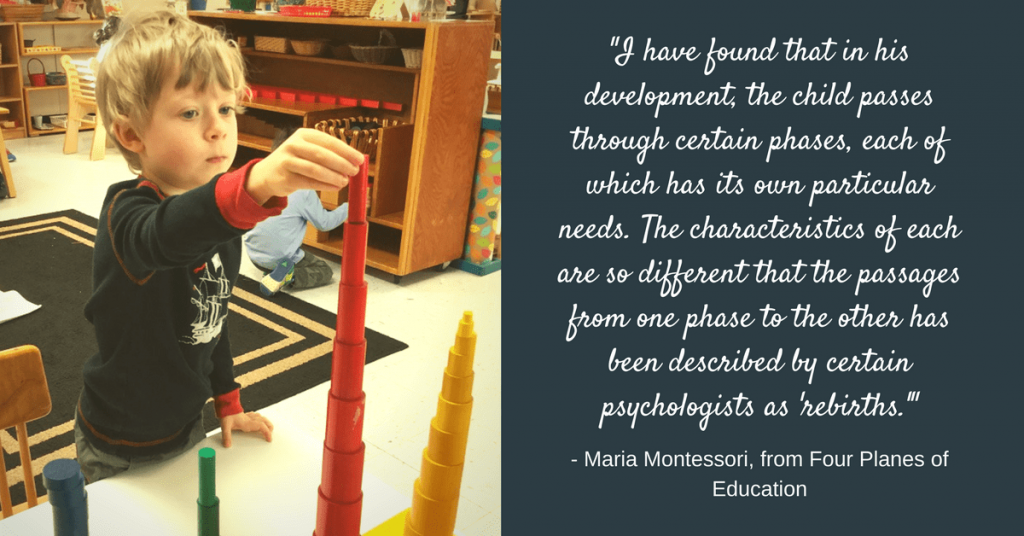As I observe classrooms at this time of year, I am always excited to see the transformation that has taken place in each child during the course of the year. This process has been going on quietly throughout the year, but it seems that in spring something in the child suddenly blooms forth. This transition is most noticeable in the new three-year-olds, six-year-olds, and nine-year-olds and can be related to the planes of development.
Montessori divided the periods of childhood growth into three planes: from birth to six, from six to twelve and from twelve to eighteen, (and subdividing the first and last into two phases).
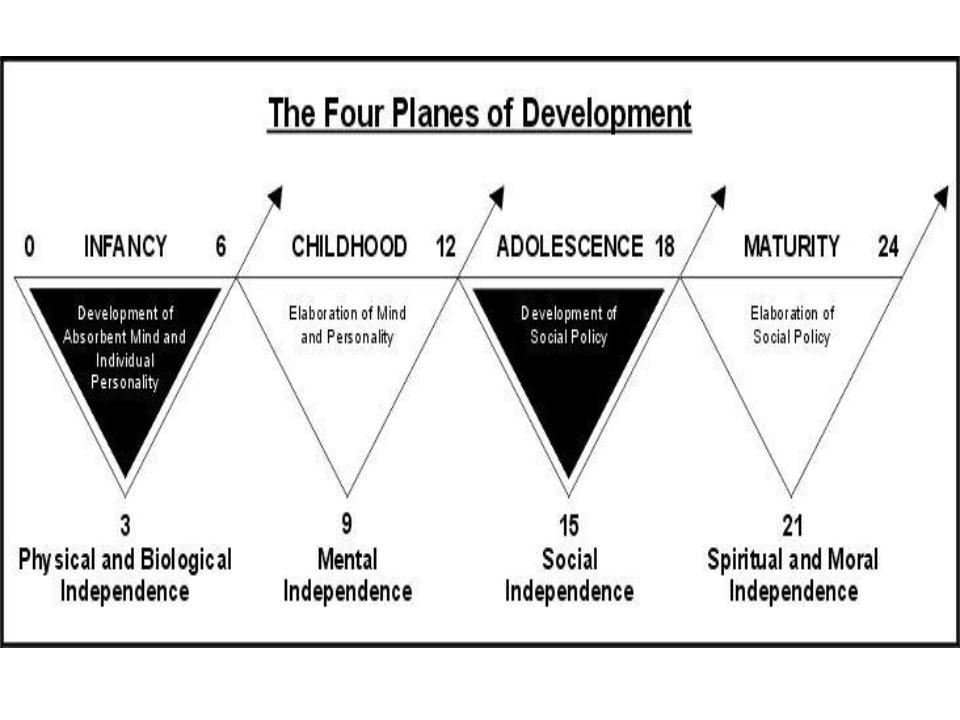
In the five-year-old child who is turning six, we witness tremendous change. The child is between two planes of development. In a sense, he has “a foot in each plane.” The physical changes are clearly seen: the growth in height and the loss of teeth; however, we also see psychological, social, and cognitive changes that are less obvious.
One key cognitive change is that the five-year-old moves beyond the simple need for order among his classroom activities. He has internalized this sense of classroom order and is now able to organize and manage a multi-faceted activity on his own. We may see him tackling work that can take all morning, or even several days, to complete. He also begins to see a bigger picture and shows a need to understand relationships—to see the connection—between things.
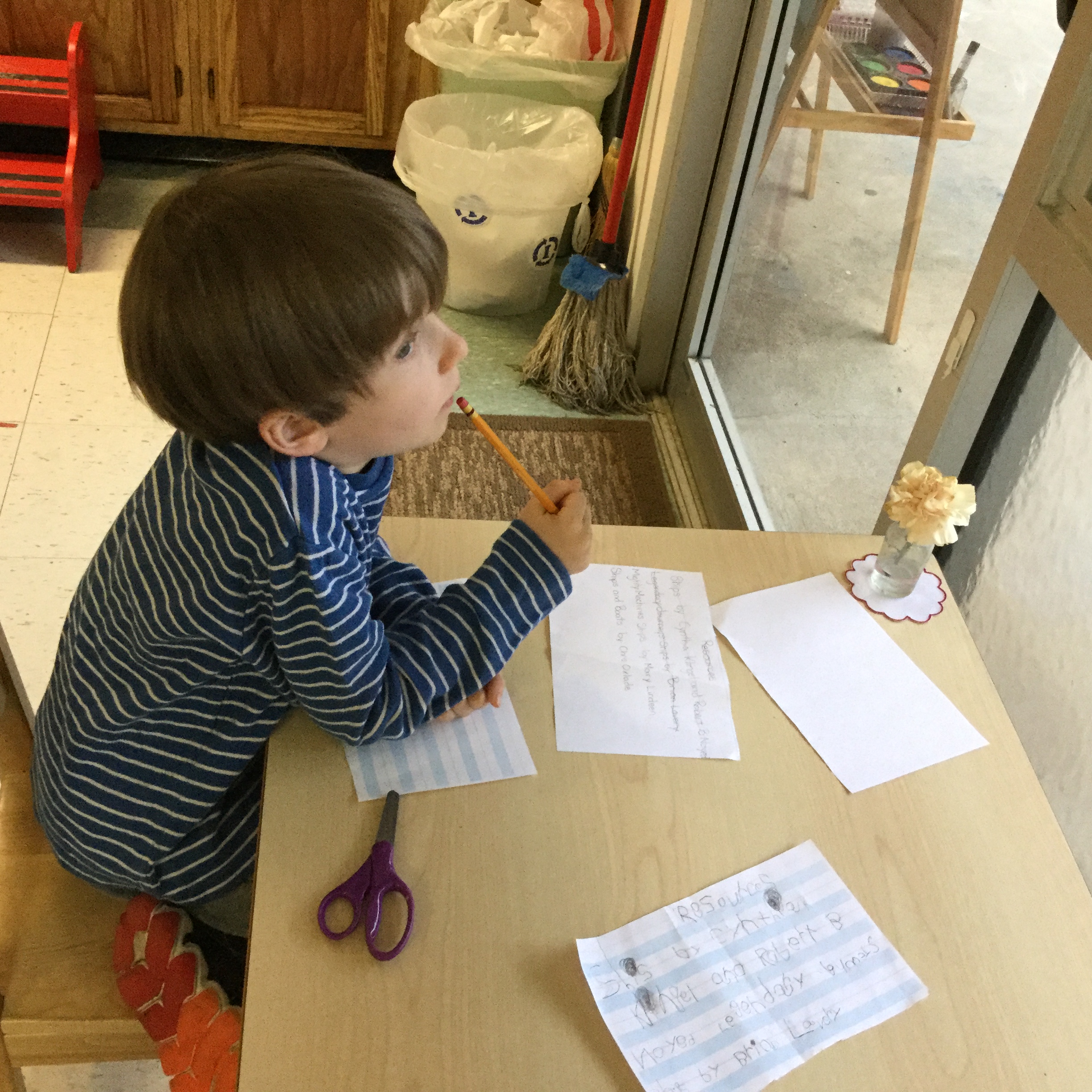
This is a time when children develop intricate extensions to works they have already mastered, combine works, or begin their own research, particularly in cultural areas. The child is stretching the classroom, extending what it offers, and pushing it on and out. Soon she begins to sense connections between different areas of study in the classroom. Soon she is ready to tackle the challenges of a fully integrated curriculum, which is the cornerstone of the cosmic education of the elementary class.
Academically, there are huge explosions in writing, mathematics, etc. These explosions occur as the child (not the adult) is ready. This is a time of questions… Why? And How?
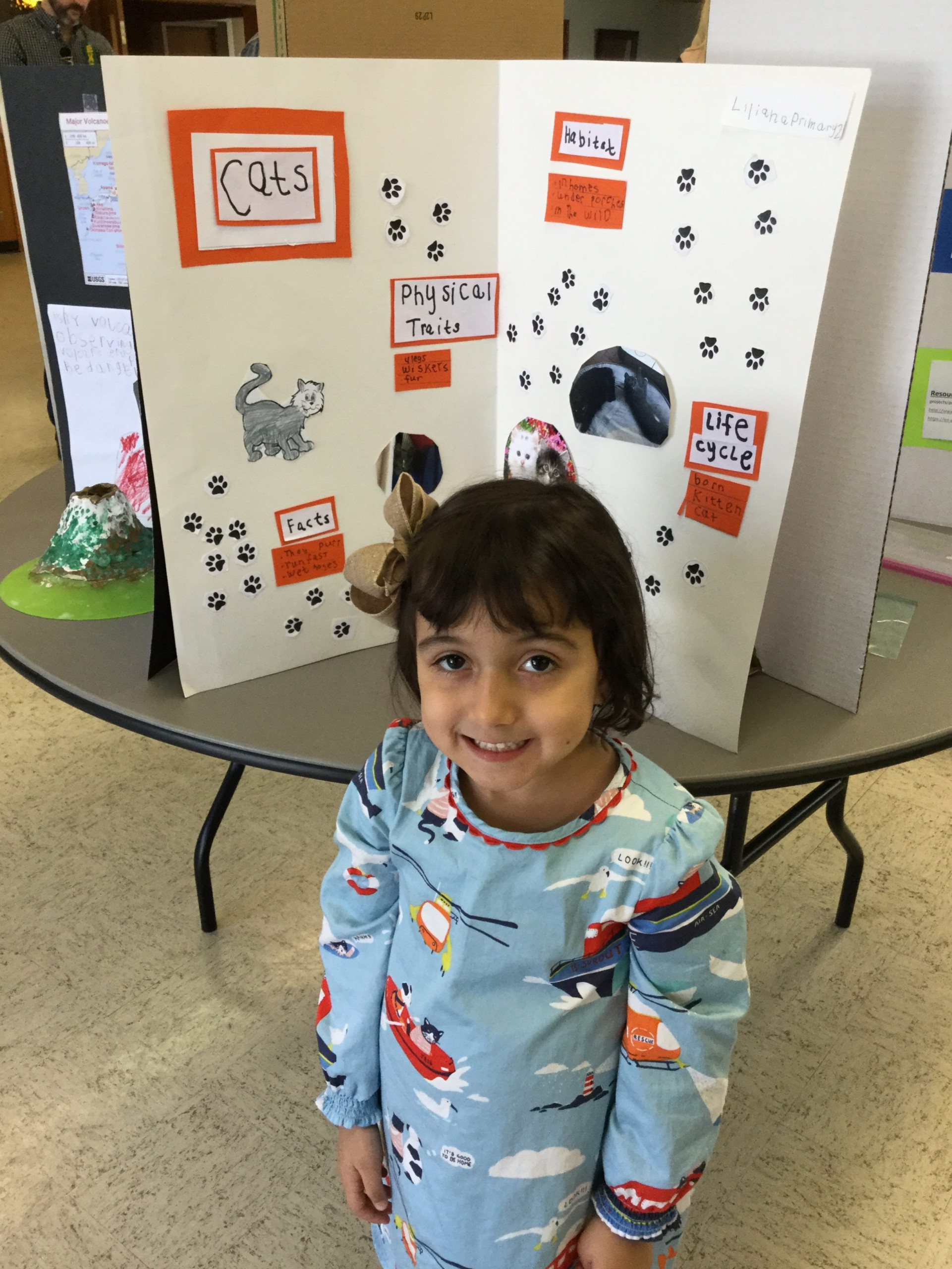 The once shy, retiring child who entered the room at three is now, at six, sure of himself and ready to move out into the world. His thinking has become more logical, he is able to see how one thing relates to another, and he is able to take the perspective of another.
The once shy, retiring child who entered the room at three is now, at six, sure of himself and ready to move out into the world. His thinking has become more logical, he is able to see how one thing relates to another, and he is able to take the perspective of another.
This is a time when guides typically provide positive examples of people whom have contributed to society to help the child develop his moral consciousness. Class meetings are usually an open forum where students and guide discuss appropriate behavior and the development of conflict resolution and problem solving skills.
The child at three sees her family as her most important social context. Now, at six, the child has a heightened awareness of herself as part of a peer group, and begins to distance herself from her family. Guides find ways to accommodate this social development by encouraging older children to work together and to work with younger children. As the six-year-olds become ready for increasing responsibilities, we see them emerge as leaders within the classroom.
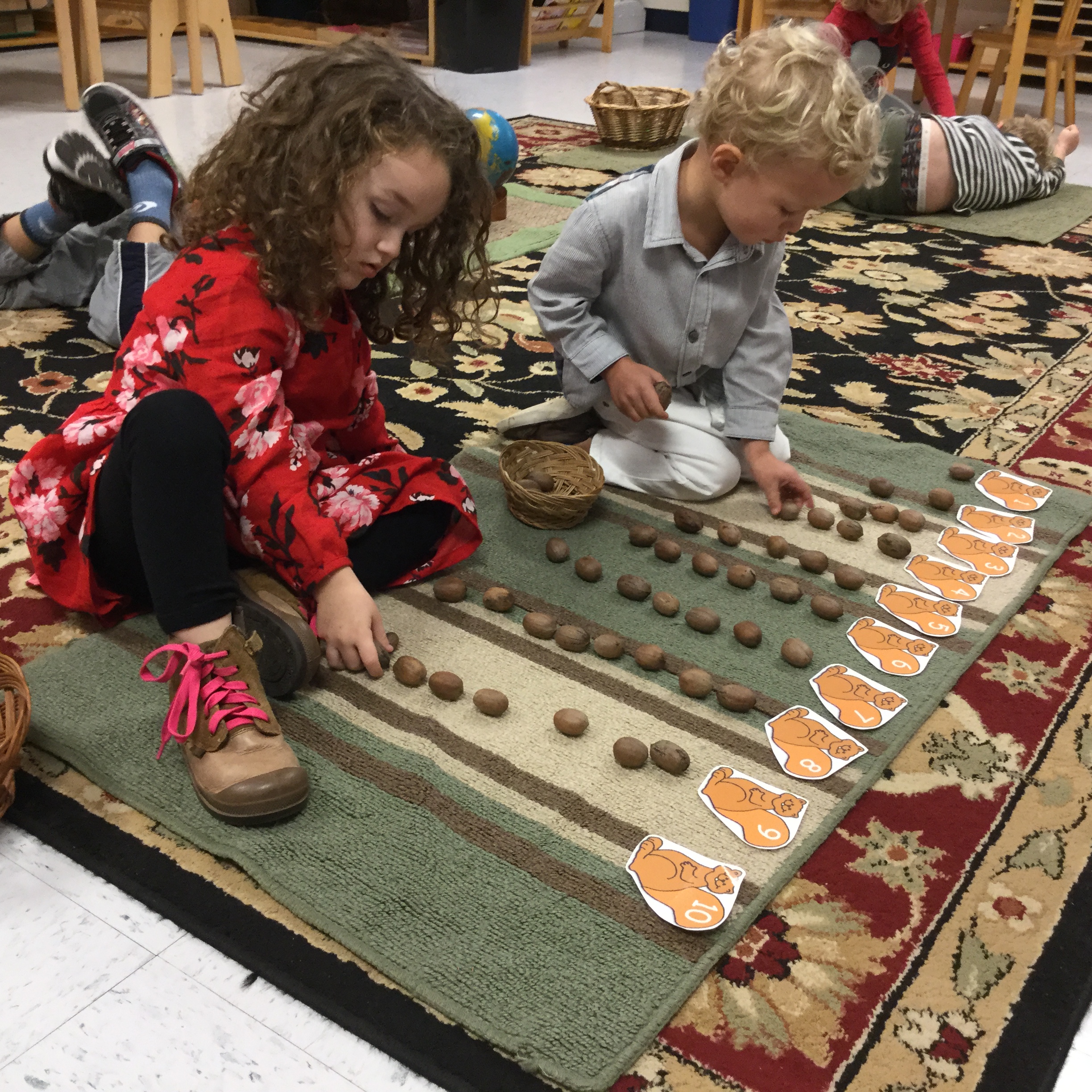
As the children play, we witness an increasing concern about fairness and equity and an interest in competition. They can organize their own group games and create rules without teacher intervention.
Gradually, throughout the year, we witness this wonderful unfolding—the child moving from the self-oriented child enjoying being with others (but essentially working individually), to the child who embraces a team spirit and enjoys working with a group for the good of the group.

